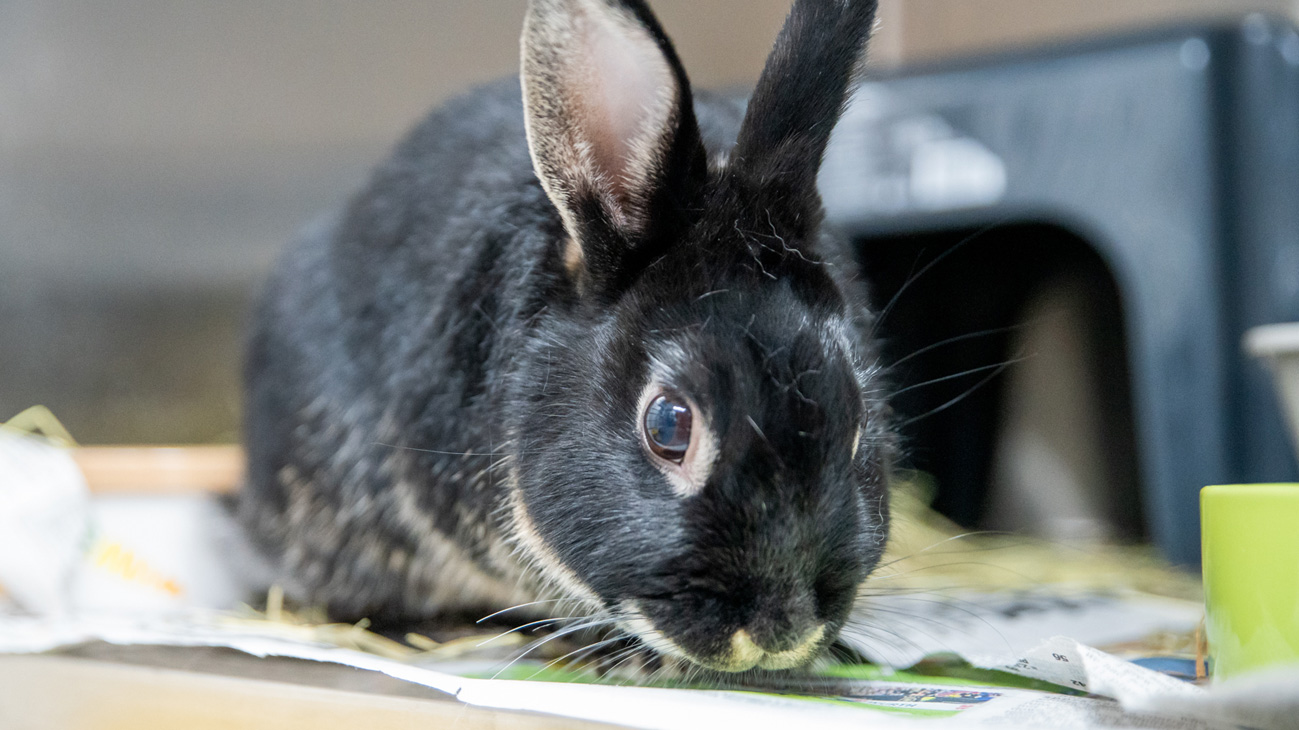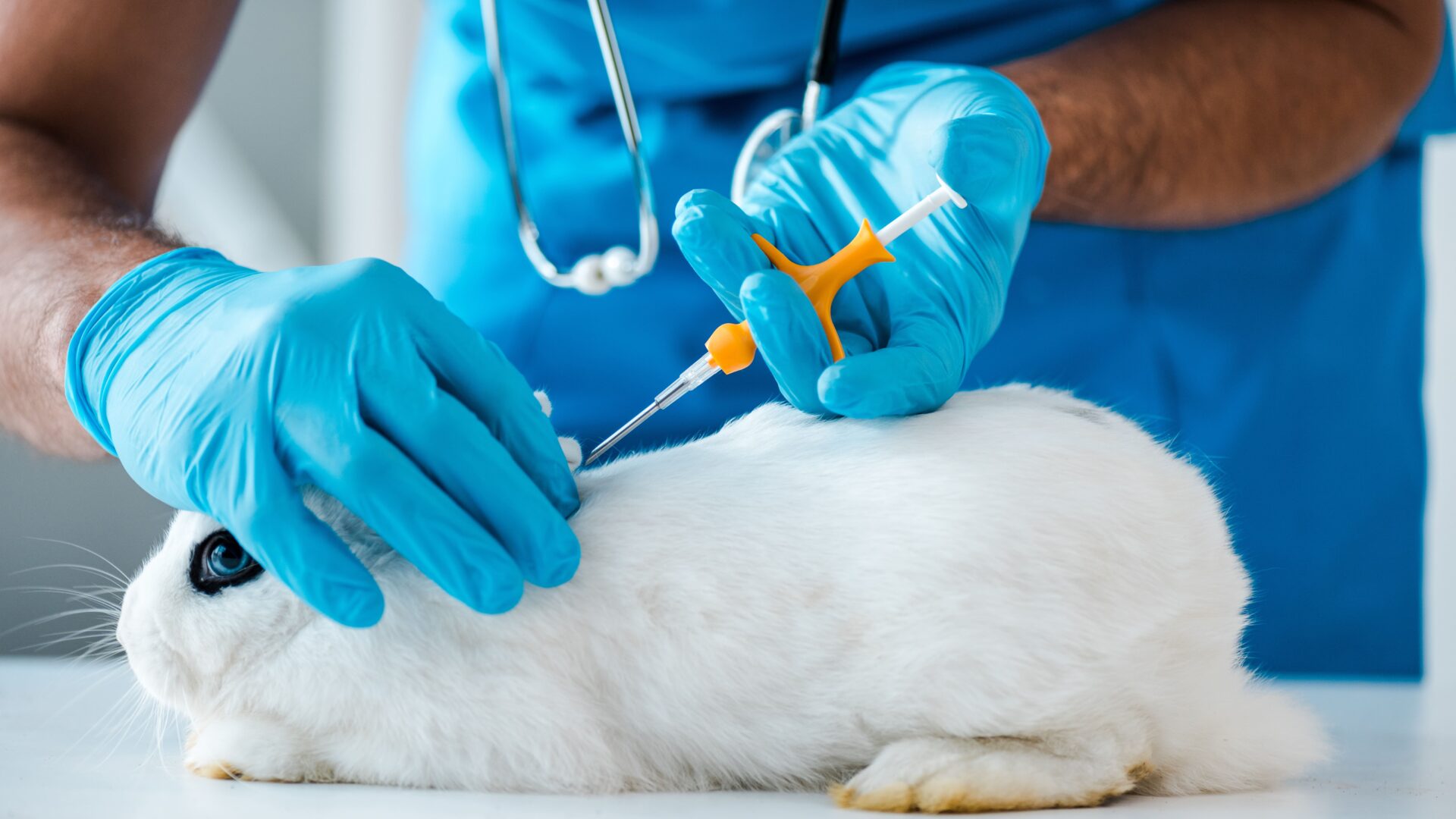Last Updated: 30/09/24
Microchipping provides a permanent source of identification for your rabbit, and is quick and easy for your vet to do.
Many indoor and outdoor rabbits are adventurous explorers, and microchips give you peace of mind that your rabbit can be identified and returned to you should they go missing.
It’s important to keep your contact details linked to the microchip up to date, so you can be contacted if your rabbit is found.
You can do this by contacting the microchip database that the chip is registered with.
Reach out to your local practice to book an appointment or learn more.
On this page:
- What is microchipping?
- What happens if I get my rabbit microchipped?
- How does a microchip work?
- How long will a microchip last for?
- Are my contact details stored on the microchip?
- Will microchipping hurt my rabbit
- Should I microchip my rabbit?
- How do I check or update my contact details with the microchip database?
- New rabbit owners
What is microchipping?
Microchipping your rabbit provides a permanent form of identification, giving you peace of mind that they can be reunited with you if they escape or go missing.

What happens if I get my rabbit microchipped?
Microchipping should only be carried out by a trained professional, such as a vet or vet nurse.
A tiny microchip, about the size of a grain of rice, is injected under the skin at the back of the neck.
How does a microchip work?
A microchip contains a unique code that belongs to your rabbit, and this is registered on a secure database alongside your contact details which can only be accessed by the relevant professionals if needed.
Being microchipped ensures that if your rabbit is ever found and taken to a veterinary practice or rescue centre, a handheld scanner can be held over their neck to find the chip number.
The person scanning would then be able to look this number up on the database and use your contact details to reunite you.
If you have just got a new rabbit who is already microchipped, take the microchip paperwork to their first vet appointment to ensure the microchip number read by the scanner matches the number recorded in the paperwork.
How long will a microchip last for?
A microchip has a special coating that protects it and is designed to last for your rabbit’s lifetime.
If any changes in contact details or ownership are required, these can be made through the microchip database, and your rabbit will not need to have a new microchip implanted.
Veterinary Nurse Shelley (RVN) says:
Dealing with a missing pet can be a very stressful situation for owners to deal with. The implications for stray pets which can’t be identified are unpleasant for them and easily avoidable. The simple process of microchipping your pet and updating your contact details regularly is so important when it comes to reuniting lost pets with their owners.
Are my contact details stored on the microchip?
No contact details are stored on the microchip, just a unique identification number.
Any contact details are stored on the database the microchip is registered to.
It’s incredibly important to keep your contact details up to date with the database to make sure you can be contacted if your rabbit is found.
The microchip is only as good as the accuracy of the details registered to it!
Will microchipping hurt my rabbit?
Microchipping is a very quick and safe procedure when carried out by a trained professional.
The microchip is injected under the skin, which may cause very brief discomfort, however once inserted, the microchip is painless and your rabbit will not know it is there.
If you are worried, always reach out to your local veterinary practice who will be happy to answer any questions and put your mind at rest.
Did you know? Updating your contact details with your vet will not update the details Linkedin to your pet’s microchip. These are stored on a separate database and can only be changed if you contact the microchip database directly.
Should I microchip my rabbit?
There are many benefits:
- It is a quick and safe procedure
- It provides permanent indentification that lasts a lifetime
- It maximises the chance of your rabbit being returned to you if they get lost or go missing
How do I check or update my contact details with the microchip database?
As an owner you are responsible for keeping your rabbit’s details up to date on the microchip database.
You should update the microchip details of any new pet you get and change your contact details any time your mobile phone number or address changes.
To change your contact details, you will need your rabbit’s microchip number and the name of the database they are registered with.
New rabbit owners
If you are registering yourself as the new owner, this will need to be okayed by the previous owner or breeder and you may also require a transfer code.
If you do not know what the microchip number is, you can have your rabbit scanned by your local veterinary practice, and you can then check which database they are registered with at www.check-a-chip.co.uk.
You will need to contact the database directly to make any changes to your contact details, and you may be charged an admin fee for any updates made.
Did you know?
Sadly, many pets go missing every year, but a variety of species including cats, dogs, ferrets, rabbits, and tortoises can be microchipped to ensure they can be identified and returned to their owners of they are found.
If you need any help, advice or would like to book a microchip appointment please reach out to your local veterinary practice

